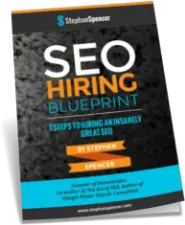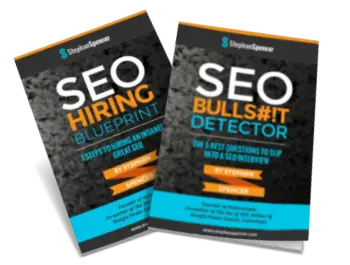The article “A Marketing Geyser: E-retailer blogs aid branding, marketing and search, as long as they stay on message just came out in this month’s issue of Internet Retailer. A great article about how retailers are taking advantage of blogging for marketing purposes. I’m quoted in the article, and so are our (Netconcepts’) clients: Steve Spangler Science and DMSI (HomeVisions.com).
(As an aside, I’ll be speaking on the same topic — blogging for retailers — later this month at the ACCM conference along with panelists Pinny Gniwisch of Ice.com and Steve Spangler of Steve Spangler Science. Ping me if you’re going to be at ACCM… I’d love to meet up with my readers.)
Thought you’d also enjoy reading the transcript of my interview with the journalist, Elizabeth Gardner, of Internet Retailer, which was conducted over email:
What are the potential benefits of blogging, specifically from a retailer’s point of view?
- Search engines – Google in particular – love blogs. So anything you have to say or sell, if done as a blog, will rank better in the search engines – all else being equal.
- If you have a good blog, you can get readers “hooked” and coming back for more (either via your RSS feed or via your email ‘blogletter’), thus further burning your brand into their minds and increasing the likelihood of repeat purchases.
- Having a blog helps get you links. If you are a blogger, then other bloggers think of you as “one of them”. As such, they will be more likely to link to you and to give you favorable coverage on their blogs. It is also more likely that you will be “on their radar”, because bloggers are more apt to follow your company’s movements by subscribing to you blog’s RSS feed than by subscribing to your email newsletter or periodically visiting your site.
- Having a blog helps get you press from the mainstream media. That’s because journalists read blogs. For example, I received unsolicited interview requests from journalists from the New York Times and the San Jose Mercury News because of blog posts I wrote.
- A blog builds your credibility and can position you as a “thought leader” in your niche. For example, a blog about stamp collecting (with interesting trends, news tidbits, insightful commentary, etc.) would position an ecommerce shop selling collectible stamps as a credible, trusted expert source for stamps.
- A blog can help you get invited to speak at conferences and to author articles.
How time, effort, cost, etc., is involved in doing it right?
A blog, in order to be viewed as active, should have at least a few blog posts per week. The higher the quality of the posts, the less frequently you have to post. Posting daily is ideal. You should allocate a minimum of 5 to 10 hours per week to blog writing. Allocate another 5 to 10 hours per week minimum to commenting on others’ blogs.
Developing your blog strategy should probably involve a blog consultant and will likely run in the $5,000 to $15,000 price range. Don’t skimp on the blog strategy: as much time and energy should be put into that as any offline marketing strategy. The initial web development and search engine optimization can run in the $10,000-and-up price range.
I’d also suggest hiring a blog consultant on a retainer basis, to help guide you through that crucial first year of blogging. That can cost anywhere from $1000 to $5000 per month.
If you’re going to recruit non-employee evangelists to blog (e.g. passionate customers), then you should allocate some small amount of budget to swag and little gifts through the year in appreciation of their contributions to the blog.
Can you share a few tips on how to go about doing it right?
- Really let your personality shine through. You blog should have a human voice, and should show there are real human beings behind the blog. Introduce your blogger(s) with an About page on the blog, and include a photo. People buy from people, not from faceless corporations.
- It really helps if you can come up with an “angle”. For example, jewelry retailer ice.com came up with a “gossip rag” angle with their Sparkle Like the Stars blog — the blog has a trendy fasionista / gossip columnist writing style, talking about what jewelry celebrities are wearing and how to replicate the “look” yourself. That is much more buzzworthy than a “here’s what’s new in stock” blog.
- Don’t just regurgitate news and content that’s already out there on the Net. Share your own insightful commentary too.
- It’s good etiquette to cite your sources and to credit the blog that led you to find the newsy tidbit you are blogging about (this is known as a “hat tip”).
- A good blogger is one who participates in the blogosphere and doesn’t write in isolation — commenting on others’ blogs as much as they write on their own blog. Also build relationships with other bloggers within virtual communities like MyBlogLog and in the real world by attending conferences like BlogOn, BlogHer, and Blog Business Summit.
- As far as retaining readers, recency is more important than frequency. A couple weeks of inactivity makes the reader feel like nobody’s home. Conversely, having the latest post be only a day old makes the blog appear “fresh”. Personally I don’t like keeping RSS feeds in my newsreader that haven’t had recent activity.
And any warnings about what not to do?
- You need to do it with sincerity and transparency. Don’t hire a ghost writer to pretend to be someone they are not. Blogs have been lambasted for trying to fool their readers (e.g. Raging Cow, Wal-Mart).
- Abandoned blogs look very bad. If you’re going to blog, you have to be committed to keeping it going.
Any examples of retailer cluelessness in this area?
Hmm… https://www.blogmagazine.com — It’s from Magazines.com and it comes off as sales propaganda that isn’t even thinly veiled. It looks like they’ve abandoned it too.
You may also want to check out my “5 Tips for Multichannel Retailers Entering the Blogosphere, which is the transcript from an interview I did last year with Multichannel Merchant magazine.







